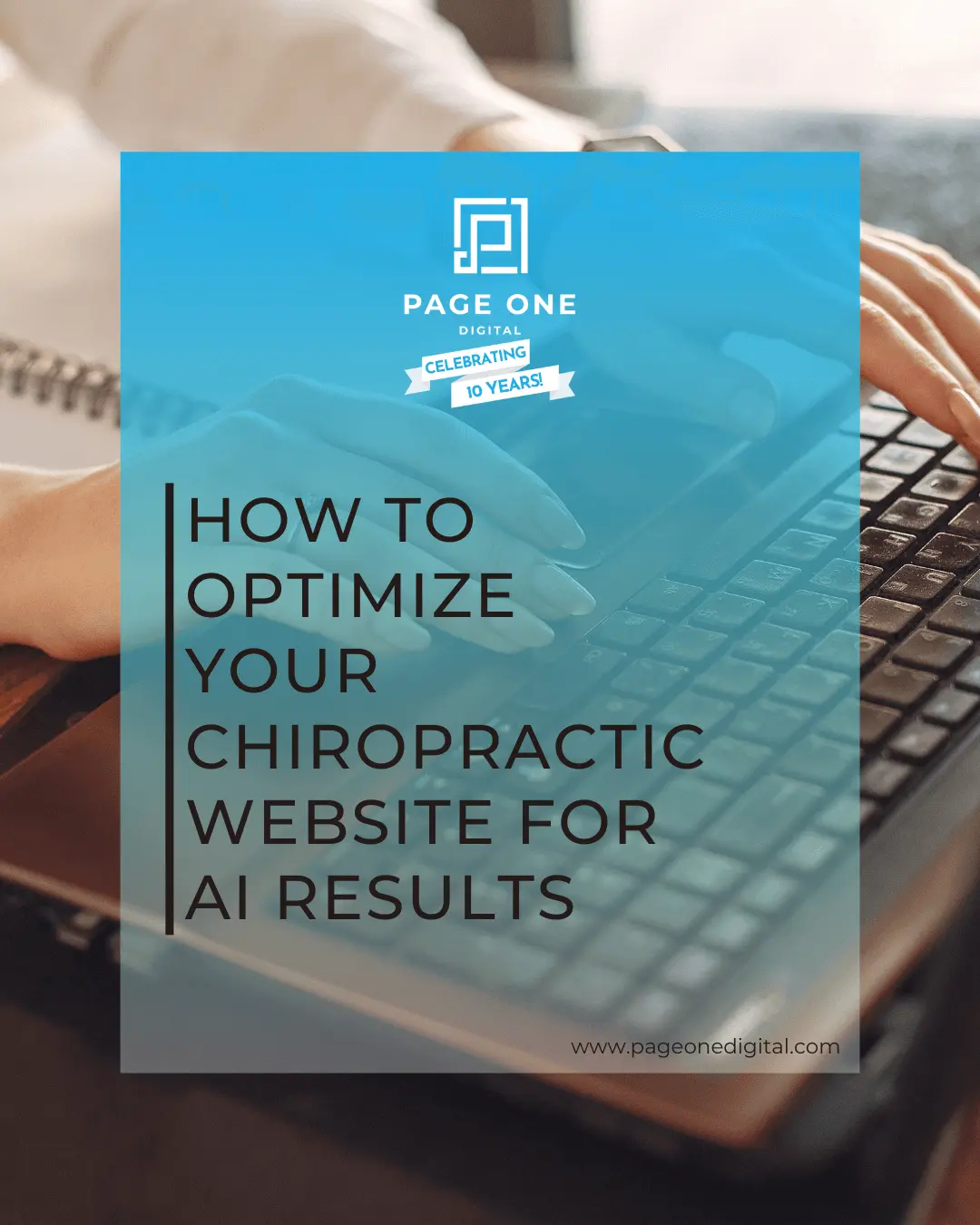With the rapid evolution of artificial intelligence (AI) and its growing influence on search engine optimization (SEO), it’s essential to ensure your chiropractic website is equipped to harness this technology effectively.
Imagine your practice not just being found online, but also ranking higher in search results thanks to AI-driven insights. As potential patients increasingly rely on smart algorithms to discover healthcare options, optimizing your site for AI can keep you in front of prospective patients.
Optimizing your chiropractic website for AI is no longer optional; it's essential. As algorithms evolve, they become smarter at understanding user intent and context. This means that websites must adapt to stay relevant.
How To Optimize Your Chiropractic Website for AI Results
Key Elements to Focus on for AI Website Optimization
When optimizing your chiropractic website for AI, focus on content quality. Create informative, relevant articles that address common patient questions and concerns. Use clear language to explain complex topics.
Next, ensure your site is user-friendly. An intuitive navigation structure helps both visitors and search engines understand your content better. Fast loading times are crucial too; nobody likes waiting.
Integrating schema markup can enhance how AI interprets your data. This structured information makes it easier for search engines to display rich snippets in search results. If you are successful at this, traffic to your website from Google Search might decrease since users will get all the information they need directly in Search results. However, your impressions from Search should dramatically increase.
Leverage local SEO strategies by including location-specific keywords related to chiropractic care in your copy and meta tags. This can help you rank higher when potential patients are searching for nearby services online.
Common Mistakes to Avoid
When optimizing your chiropractic website for AI, avoiding common pitfalls can make a significant difference in your results. One frequent mistake is neglecting mobile optimization. With more users accessing websites from their phones, ensuring that your site is responsive and user-friendly on all devices is crucial.Another error involves overloading content with keywords. While it’s essential to incorporate terms like "chiropractor near me," keyword stuffing can lead to poor readability and hurt your rankings. Focus instead on writing in a natural, conversational tone that engages readers while remaining relevant to search engines.Don’t overlook the importance of regular updates and fresh content. AI algorithms favor sites that are current and active; therefore, keeping blogs or articles up-to-date will help maintain relevance in search engine results.Effective SEO strategies should evolve regularly, especially to keep up with AI's role in Search results. If you want to ensure your chiropractic website is set up for success, reach out to us for an audit.
Related Posts

Using Google Search Console to Measure SEO Part 1
Any website owner who is serious about improving their digital platform's quality should understand the importance of collecting data with the ultimate goal of improving overall performance. That said, most website owners that we work with are still not using free tools like the Google Search Console to accurately measure Search Engine performance.

Find Success with SEO in 2020
2020 is officially here and it is the year for you to find success with SEO! We hope your site is getting the results you desire (especially with the help of our SEO resources). Even if you are satisfied with the results you’re getting, don’t get too comfortable.

5 Important On-Page SEO Factors
Want to to learn more about on-page SEO factors? Check out this article from guest blogger Tyler Nalbach with SEO Align.


